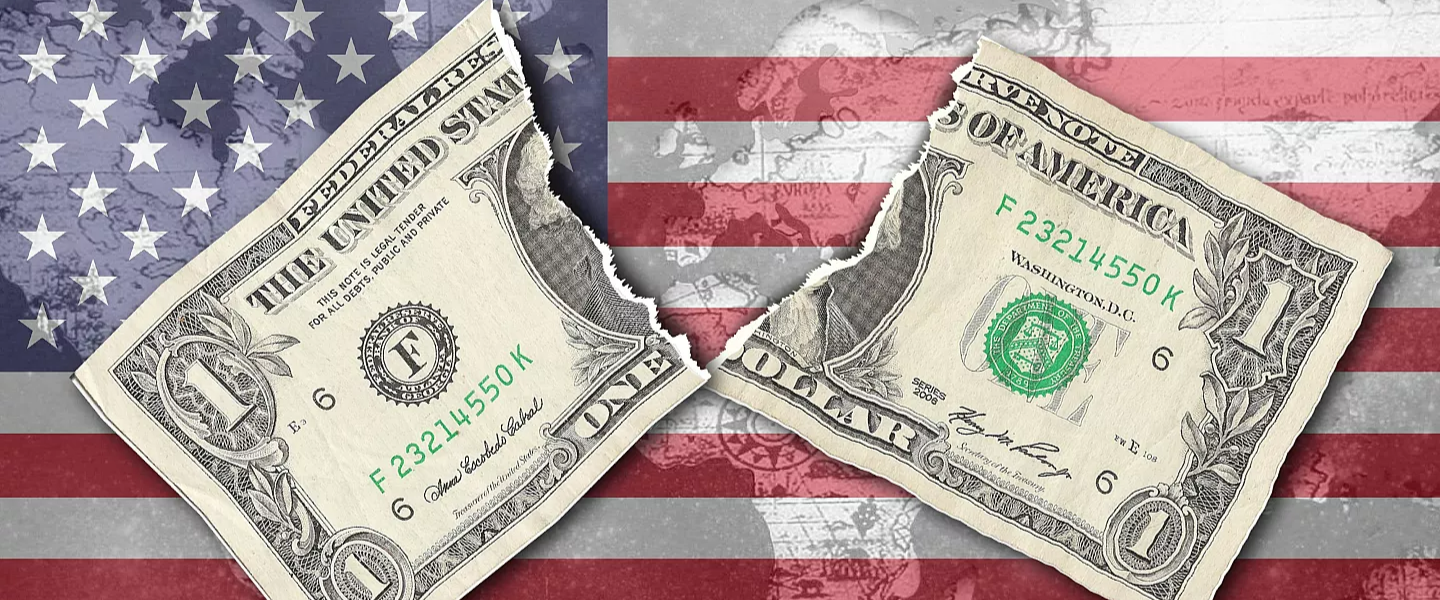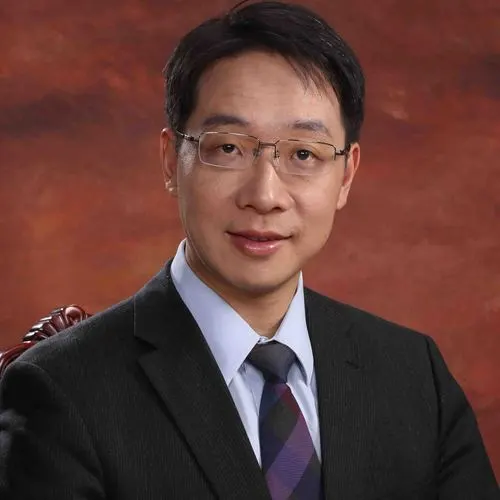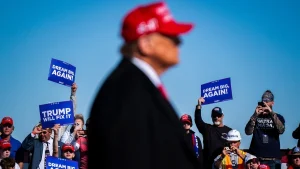A Metaphor on US Dollar Laughing BRICS Scholars Out

The main characteristics of the current monetary system can be traced back to its formation in 1971 due to a “default”. This system was not formed through legitimate international organizations, negotiations, or agreements, but rather was the result of unilateral actions taken by the United States in 1971.
After World War II, 44 countries signed and recognized the Bretton Woods system, which used gold as a “hard anchor”. Today, various national currencies can only be exchanged for US dollars. However, from 1945 to 1971, holders of the US dollar could also convert them to gold at a fixed price. Therefore, despite the logical flaws in this system, its legality was recognized by international agreements. However, the Nixon Administration unilaterally conducted a so-called “soft default” and announced the “temporary suspension of convertibility into gold” in 1971. Although the US emphasized at the time that the suspension was “temporary”, this state of affairs has actually gone on for more than half a century. The current system can be said to be illegitimate, as it has not been officially recognized by any country. This is the first point I want to emphasize.
 Prof. Di Dongsheng speaking at the conference
Prof. Di Dongsheng speaking at the conference
After the soft default, the world entered an era of complex geopolitical jostling. Today, the global monetary order has two notable characteristics. First, sovereign currencies, in particular the US dollar, have become global reserve assets. Other currencies such as the euro, yen, and pound also have serve as reserve currencies to some extent. Their relative usage follows a power-law distribution, where the US dollar holds the dominant position, followed by others in exponentially decreasing order. Second, exchange rates are floating and fiat. Modern currencies are decoupled from actual goods or assets, meaning they are fiat. In other words, US dollars holders can no longer exchange for gold at the Federal Reserve. These two characteristics lead to many peculiar phenomena in today’s economic and financial world. For example, whenever the US economy encounters problems, the US dollar appreciates instead of depreciating. It’s as if a dying person’s credit does not collapse but soars instead. These counterintuitive phenomena stem from the two structural flaws mentioned above. Let me use an analogy to describe this unfair situation: imagine we are in a large room with central air conditioning, but I hold the remote control. I adjust the temperature according to my personal preference, ignoring others’ feelings. The problem is that both the remote control and the air conditioner are public goods but are used for my personal preferences. Basically, the global economic cycle depends on the US debt cycle, and the global interest rate cycle depends on the US Federal Reserve’s interest rate cycle. I believe that by setting aside financial jargon, this analogy can drive home the illogical and dangerous nature of the current arrangement.
Another unfair aspect lies in the fact that the world’s money is essentially stored in the US sovereign credit. Thats is, the money earned through your hard work is in America’s pocket, they can withdraw it whenever they need it, without your consent. For example, during the COVID-19 pandemic, while the US and Europe have responded poorly to the pandemic, their economies remained prosperous. One main reason is that the central banks of the US, Europe, UK, and Japan expanded their balance sheets by $10 trillion. It’s as if I embezzle the money I was safeguarding for everyone to pay my own huge bills. This group of one billion people, a small part of the world’s eight billion, can freely withdraw money from others, getting an average of $10,000 per person over two years.
Based on the above, I co-authored an English paper with Dr. Warren Coats, the long-term head of the IMF’s Special Drawing Rights department. We advocated that the global monetary system should return to a “hard anchor” by establishing a new currency that is redeemable and anchored to real goods. Despite our different political backgrounds—he is a loyal American Republican, and I am a loyal Chinese Communist—we reached a consensus on this issue. This new currency would make the global monetary system fairer and more reasonable, and in the long run, it would benefit the US as well. Although the US currently enjoys short-term privileges, it will lead to industrial hollowing, economic bubbles, and social division in the long run.
The current international situation provides us with a good opportunity. By starting with BRICS countries at the core, with the addition of the Shanghai Cooperation Organization and the countries along the Belt and Road, and even inviting interested countries from Europe and the Americas, we can jointly promote a new currency unit that is redeemable and hard-anchored.
Professor Cao mentioned a feasible approach of weighted average of commodities. This new currency could be linked to commodities such as gold, silver, and other precious metals, as well as base metals like steel, aluminum, lithium, and nickel, and other commodities tradable in bulk commodity markets. Holders of this currency could legally exchange a basket of commodities at a fixed price within a corresponding network. Other currencies, including the RMB, Ruble, and Rupee, would float relative to this new currency. This baseline currency could be used for trade and debt settlement, avoiding manipulation or control by a hostile or malicious country. The specific distribution of benefits and sharing of responsibilities need further technical discussions, but it must be emphasized that it is not acceptable for just one country to have the final say or veto power. Another crucial point is a mechanism for sharing of seigniorage, which is of paramount importance.
Finally, I want to address objections to this idea and my rebuttal to that. The most common objection is concern that this would just repeat the failure of the Euro integration, where regional currency integration without fiscal integration leads to crises. However, I believe that the BRICS currency is not trying to integrate the BRICS countries’ currencies. It is a defensive measure rather than an offensive one, a marginal improvement to address the current illogical situation and avert potential crises. It is clear that this is not designed to solve every problem forever, but a defensive measure to address the present illogical situation and avert potential crises. Each country’s currency would still exist, and countries would not give up their monetary sovereignty. Instead, a new tool would be created to avoid the potential dangers and harms brought by the dollar and the dollar-based payment and financial systems.
Several people addressed my analogy regarding a remote control, so I would like to respond further. One point is from Eric, who believes that the remote control has brought enormous benefits to the United States. A more precise description is that the United States was once a great, even the greatest, manufacturing country. However, due to the dollarized global monetary system, its financial economy has reshaped its real economy. Today, the US has become a major financial empire, but the relative contribution of its manufacturing sector has significantly decreased. Currently, its manufacturing employment accounts for only 8% of total employment, and has remained stable at this level since 2008, despite various measures that have been taken to stimulate it.
Thus, it can be said that the US economy is addicted to this dollar hegemony. The U.S. was once “muscular”, but it has now become “fat-laden”. To maintain this comfortable lifestyle, it inevitably strives to maintain dollar hegemony. As Marco mentioned earlier, their resistance is entirely understandable. Although our creation of a new, non-fiat, and non-defaultable currency unit appears to be a defensive measure, it actually has offensive attributes. Once this currency unit is created and operates stably for some time, even the major families on Wall Street, including those who control the Federal Reserve or have voting rights and dividend rights in the Federal Reserve, will also invest part of their funds in this asset, because it looks very attractive.
Additionally, I want to add one more point. According to my research, in a monetary system without a hard anchor, which describes the world’s monetary system over the past 50 years, rising sovereign debt makes your financial system more secure. Hence, the higher the debt ratio, the more secure it is, and the less you need to be worried about it. Also, this debt must be government bonds denominated in your own currency—the more, the safer, and vice versa. However, if we change into a redeemable, hard-anchored monetary system, the entire logic reverses. Creditors will have enormous power, and the more debtors owe, the more trouble they run into. This would be a significant change in the rules. Unfortunately, in the financial textbooks I have read, no one has explicitly pointed this out. This is also understandable, because China’s financial and economic textbooks are mainly translated from English, and the logic within English textbooks largely carries over from the time of the gold standard era. This is the first point I want to add.
The second point concerns the economic cycle mentioned by Professor Gong Gang. Recently, I have been leading a small team to study the Soviet economy. We are facing a possibility, a possibility that we Chinese do not like but have to confront: the world economy is decoupling. What will happen after this split? A few years ago, I published a book called “Parallel Competition”, which might be one of the earlier books in the Chinese world to propose the idea of parallel systems and rebuilding parallel systems. Through my research, I was surprised to find that the Soviet Union never built a parallel system. Only in Stalin’s final years did he attempt to build a parallel economic system. But once Khrushchev came to power, he immediately flew to Camp David to negotiate peaceful competition with the U.S. The result was the failure and collapse of the Soviet Union, leading to today’s Russia-Ukraine conflict. The failure of the Soviet Union lies precisely in Khrushchev’s failure to adopt Mao Zedong’s suggestions. Mao Zedong had proposed that, as “the East wind prevails over the West wind”, China was willing to provide as many divisions as the Soviet Union needed. As Khrushchev wrote in his memoirs, his response to Mao was that in the nuclear age, Mao’s idea was wrong, even hundreds or thousands of divisions would end up as just cannon fodder in the nuclear age. Looking back now, I think Mao Zedong was actually right. Nuclear weapons cannot be used; they can only be used for nuclear blackmail by nuclear-weapon states over states without nuclear weapon, but they cannot be used between nuclear powers. If Khrushchev had followed Mao’s advice back then, the Soviet Union might not have collapsed at all.
Editor: Leo Cai




